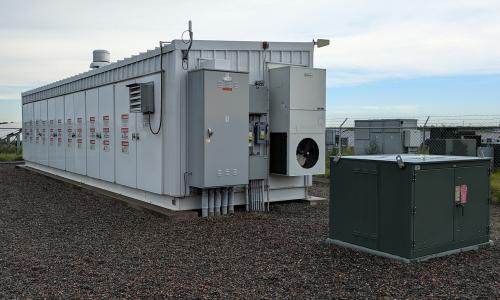Massachusetts faces a natural gas and carbon-reduction challenge.
The state has been reducing its dependence on coal and oil for electricity generation, but in the process has become heavily reliant on natural gas. This poses numerous risks, including financial ones for consumers, who could face dramatic price swings and other impacts.
The state has also made progress in cutting carbon dioxide emissions to help address climate change, but needs more reductions, and could be hampered by heavy dependence on natural gas.
Analysis shows that Massachusetts can avoid the risks of over-reliance on natural gas while simultaneously reducing its carbon dioxide emissions. Implementing policies to tap into hydropower, land-based and offshore wind, and other renewable energy resources would cut carbon emissions—and capture a range of additional consumer, health, and economic benefits—at modest cost.
The risks of too much natural gas
The mix of electricity sources in Massachusetts has changed appreciably over the last 15 years as natural gas replaced much of the oil and coal. Natural gas now makes up over 60 percent of in-state electricity generation, more than double its contribution in 2001.
While natural gas prices are low now, they are historically volatile with wide price swings tied to increasing demand, extreme weather events, and uncertainties about available gas supplies. Price swings are often felt more acutely by electricity consumers in states that rely more heavily on natural gas.
Consumers can also feel the pinch from the costs of carbon pollution, and from overinvestment in natural gas infrastructure, which could saddle customers with costs for underused, idled, or abandoned pipelines and power plants.
Renewable energy solutions and benefits

A Massachusetts energy plan that diversifies the existing electricity mix—by providing a balanced role for natural gas while increasing the role for offshore and onshore wind, large scale hydropower, and solar—would help insulate the state from natural gas price spikes, cut global warming emissions, and provide economic and health benefits to residents.
If Massachusetts moves forward with this suite of renewable energy policies, the state and its residents could experience a slew of benefits, including:
- Lowering consumer risks associated with natural gas overreliance. Under the suite of policies, natural gas use in the region would drop 23 percent below business-as-usual by 2030, which also means lowering inherent risks, associated with too much natural gas use.
- Decreasing global warming emissions and air pollution. The modeled combination of policies would bring regional and global health and economic benefits of more than $350 million in 2030 alone, and decrease carbon emissions 6.6 million tons below business-as-usual.
- Creating more renewable-energy jobs. A key result of replacing an out-of-region energy source like natural gas with an in-region, renewable energy source is additional job creation in the clean energy sector, which currently employs almost 100,000 people in Massachusetts.
- Leading the nation in offshore wind. If the state positions itself as a leader in offshore wind nationally, it could capture “first-mover” economic advantages such as expertise in manufacturing, project development, operations and maintenance, so that it will be a go-to resource for other states when they follow suit.
The increased investments in renewable energy to reduce natural gas risks could raise average household electricity bills above business as usual by about $3.00 per month in 2030—a much smaller increase than the year-on-year swings in average monthly electricity bills that Massachusetts households now regularly experience.
Recommendations

- Be inclusive. Combining different energy technologies can bring benefits beyond those of a more limited approach, and appreciably beyond what business as usual would bring.
- Avoid incentives for fossil fuel infrastructure. To reduce the risks of natural gas overreliance, Massachusetts should not require electricity ratepayers to bear the long-term financial risks of additional investments in fossil fuels.
- Invest at scale. To maximize the benefits of offshore wind, Massachusetts should invest at a scale commensurate with the state’s power and carbon reduction needs and the major opportunity that this new technology represents.
- Use other tools in the energy toolbox. Added energy efficiency could offset some or all of the modeled policies’ price increases as well as enhance the carbon reduction benefits. Widened deployment of solar could also reduce energy prices while bolstering a proven job-creating sector in Massachusetts.
- Maintain the lead. Massachusetts has long been a leader in climate and energy issues. That leadership must continue. With offshore wind in particular, Massachusetts can capture many of the economic advantages of launching a cutting-edge industry.



